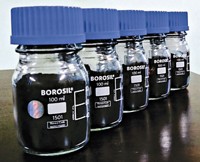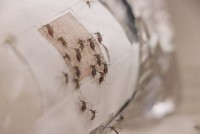Advertisement
Grab your lab coat. Let's get started
Welcome!
Welcome!
Create an account below to get 6 C&EN articles per month, receive newsletters and more - all free.
It seems this is your first time logging in online. Please enter the following information to continue.
As an ACS member you automatically get access to this site. All we need is few more details to create your reading experience.
Not you? Sign in with a different account.
Not you? Sign in with a different account.
ERROR 1
ERROR 1
ERROR 2
ERROR 2
ERROR 2
ERROR 2
ERROR 2
Password and Confirm password must match.
If you have an ACS member number, please enter it here so we can link this account to your membership. (optional)
ERROR 2
ACS values your privacy. By submitting your information, you are gaining access to C&EN and subscribing to our weekly newsletter. We use the information you provide to make your reading experience better, and we will never sell your data to third party members.
Environment
Roving Robots Pick Up Anthrax Spores
Homeland Security: Commercial vacuum robots could help emergency responders scan areas quickly for contamination after a biological weapons attack
by Erika Gebel
March 6, 2013

In the event of a biological weapons attack, first responders might deploy legions of vacuum robots to quickly find contaminated areas. Researchers at the Environmental Protection Agency report that commercial cleaning robots, such as the Roomba, can effectively collect spores from Bacillus anthracis, the bacterium that causes anthrax (Environ. Sci. Tech., DOI: 10.1021/es4000356).
First responders typically test potentially contaminated areas by wiping hard surfaces with a sponge or collecting samples from carpet using a vacuum hose. The problem is that these tests cover only a small area at a time, not much more than a square meter. This limitation could slow cleanup and recovery after a large-scale attack, write the study’s authors, led by Sang Don Lee. They believe cleaning robots, which can roam from 100 to 400 m2 on one battery charge, might prove superior spore collectors.
The researchers tested five commercially available cleaning robots. They spread roughly a million anthrax spores per square foot on the floor inside a 91-cm-wide by 91-cm-long test chamber. The chamber sat in a special room that prevented the spores from escaping into the environment. The team ran two tests: one with a carpeted chamber floor and the other with a laminated one. They also compared the robots to the two standard collection methods.
Each robot run lasted up to nine minutes. In the carpet tests, the best robot collected 62% more spores then the traditional vacuum method did. Meanwhile on the laminated floors, the best robot collected 38% fewer spores as the sponge method. So although further studies are needed, the robots show promise as a fast way to detect contaminated areas, the authors say.





Join the conversation
Contact the reporter
Submit a Letter to the Editor for publication
Engage with us on Twitter